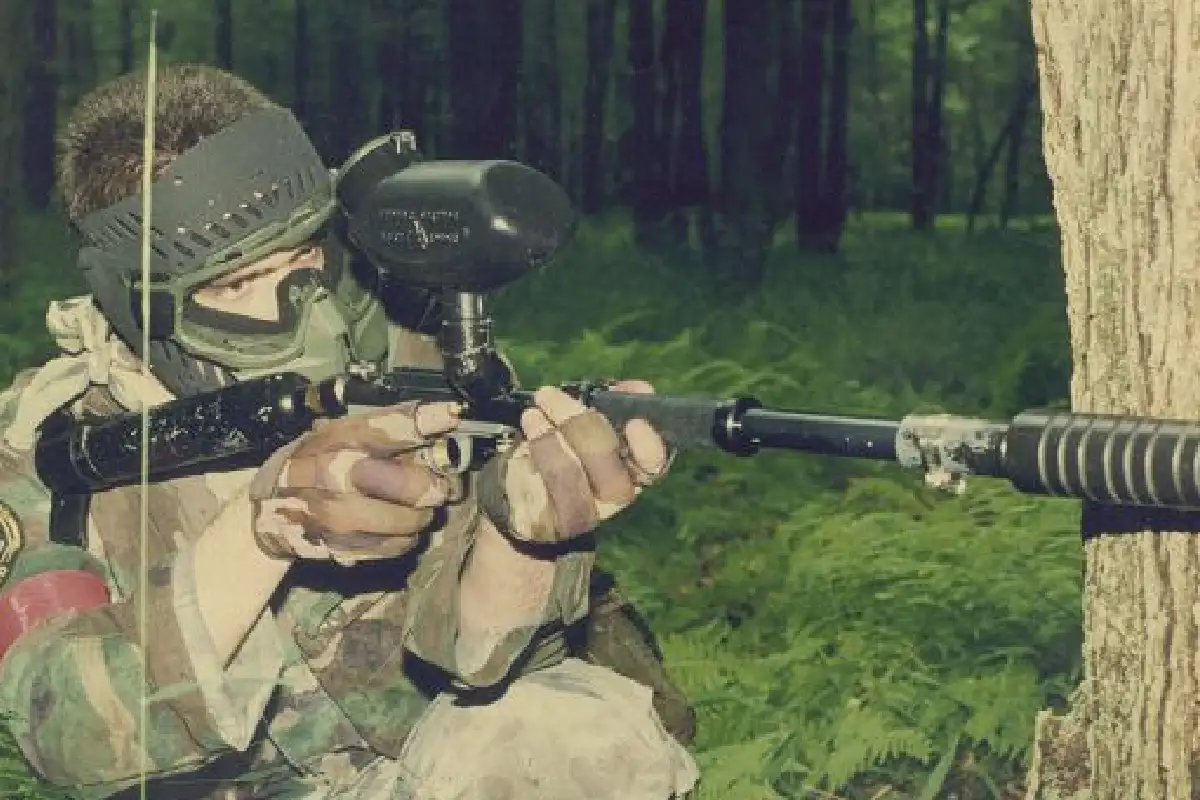Paintball first hit Australian shores in the late 1980s, following its rise in the United States as a recreational activity combining outdoor fun with tactical challenge. What began overseas as a forestry marking tool turned shooting sport quickly gained popularity among thrill-seekers looking for something new, adrenaline-filled, and team-oriented.
Early games in Australia were small and largely improvised, held on private land using rudimentary gear and borrowed rules. The Paintball guns, often called “markers”, fired oil-based paint pellets, and protective gear was minimal. Despite the rough beginnings, interest grew fast. Within a few years, commercial paintball fields began to open, particularly in New South Wales, Victoria, and Queensland, offering structured gameplay and rental gear to meet growing demand.
By the mid-1990s, paintball had gained real momentum. Fields started popping up across the country, and manufacturers responded with better, safer equipment. The sport began to diversify, no longer just a game of bush battles or backyard ambushes, but a full-blown competitive sport. Formats like speedball and scenario games emerged, catering to everyone from casual weekend warriors to serious tournament teams.
At the same time, state and territory governments began regulating paintball more seriously, mainly due to public concerns about safety and the visual similarity of paintball markers to firearms. Each state handled things differently, and this fragmented the rules across the country.
In New South Wales, for example, players must be at least 16 years old, and markers are classed as Category A firearms, meaning you need a firearms licence to own one privately, but not to rent and use at a licensed field. Other states, like Victoria and Western Australia, also require markers to be registered and players to hold licences for personal ownership. Meanwhile, Queensland and South Australia are more relaxed, players can usually walk onto a field without any prior licensing, provided they’re over the age limit and playing at a legal venue.
Despite the patchy legal landscape, paintball kept growing. By the 2000s, Australia had built a solid paintball culture, with competitive leagues, international events, and a strong community of players, referees, and field operators. Teams travelled across states to compete, and some even went international. Paintball became not just a hobby but a lifestyle for many.
Over the past decade, paintball has held steady as one of Australia’s most popular tactical sports, even in the face of new trends like gel blasters and online gaming. Fields have upgraded their equipment, introduced safer low-impact paintball options for younger players, and continued offering events from bucks parties to corporate team-building days.
The Legal Situation Today
Today, paintball is legal in every Australian state and territory, but with varying rules:
- Minimum age: Usually 15 or 16 to play, depending on the state.
- Private ownership: Often requires a firearms licence and registration (especially in NSW, VIC, WA).
- Venue play: Generally legal for the public, as long as it’s at a licensed paintball facility.
Operators are required to adhere to strict safety standards, including the use of ASTM-certified masks, chronograph testing for marker velocity, and clearly designated game zones. Paintball guns must be stored, transported, and handled under the same regulations that apply to other registered firearms in states where they’re regulated.
Despite these rules, paintball remains alive and well in Australia, sustained by a loyal player base and a steady flow of newcomers. The sport is accessible, exciting, and one of the few competitive activities where teamwork, adrenaline, and laughter mix so naturally.
While it may not always get the media spotlight, paintball in Australia has carved out its own legacy, one made up of muddy boots, bright splats, and friendships forged on the battlefield.
